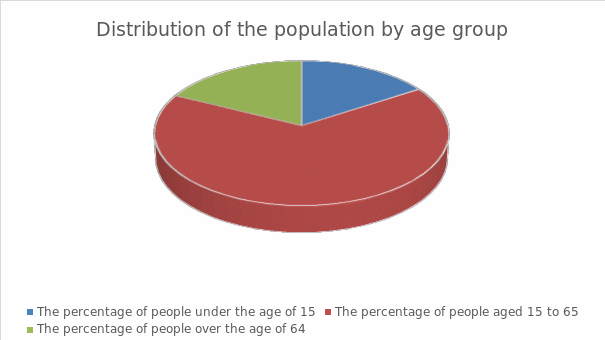Finland is an attractive and diverse market for export. In 2018, Finland exported $76.8 billion and imported $75 billion (Statistics Finland, 2021). Finland’s main imports are crude oil, motor vehicles, automotive parts, and broadcasting equipment. Finland’s economic system has several advantages, making it attractive for Prism export. The country’s membership in the EU provides access to huge markets for goods and services. The low level of bureaucracy in Finnish structures and efficient support system for entrepreneurship also make the country attractive. In addition, Finland’s high degree of involvement in the global economy, its reliable infrastructure, the stability of the financial system, and the professionalism of the Finnish employees play an important role.
In addition to the attractiveness factors, businesses in the Finnish market can also experience some challenges. These include the long payback period of new production projects, relatively high production costs by global standards, and the high level of competition in a narrow market for goods and services. Finland is one of the most demanding markets in Europe and the world. The country is ranked third globally in terms of the competitiveness of its national economy. It is among the world leaders in institutional development, education and employee skills, and the level of innovation. Under such conditions, it can take from 3 to 5 years to launch a product on the Finnish market, which requires enormous work, and no one can guarantee a positive result for the entrepreneur (Okruhlica & Holienka, 2018). In addition to the highly demanding market, it is not easy to squeeze out established European competitors. However, Finland can be considered the best “test” for a new product. If it succeeds in the Finnish market, it is very likely to succeed in the rest of Europe as well.
Regarding the demographic structure of Finland, there are two critical factors for the exporting company – the number of people in the middle age group (potential consumers of the product) and the demographic pressure ratio. As for the first indicator, at the beginning of 2021, the Finnish population had the following age distribution (Figure 1. Distribution of the population by age group).

Finland’s age chart has a regressive or declining type. This type of chart is usually found in highly developed countries. In such countries, the level of health care is usually relatively high, as is the level of education of the citizens. Because of relatively low mortality and fertility, the population has a high life expectancy. Together with many others, all these factors lead to an aging population. Regarding the second factor, the demographic pressure ratio shows the burden on society and the economy of the non-working-age population. The non-working-age population is defined as the total population under 15 years of age and over 64. The ratio is a direct reflection of the financial outlays on social policy in the state. In Finland, the total demographic pressure ratio is 51.2 % (Statistics Finland, 2021). The ratio indicates that Finland has a relatively high social burden on society. It means that every working person in Finland has to provide more than 1.5 times the amount of goods and services necessary for him/herself.
When describing the availability of business infrastructure in Finland, it should be based on the needs of the exporting company. Prism is an IT company that provides data protection services for its users. Accordingly, the company is interested in the availability of electricity and Internet infrastructure. Electricity generation in Finland is decentralized to more than 400 power plants, using various technologies and raw materials. This diversified approach ensures high security of supply. The ultra-fast and cyber-secure C-Lionl submarine cable connection between Helsinki and Germany is a digital backbone connecting Finland to Central and Eastern Europe (Okruhlica & Holienka, 2018). Finland is also an active participant in the Arctic Connect project, a digital bridge between Europe and Asia.
Business infrastructure requiring data protection – banks, offices, private educational institutions, and government offices – is also a necessity. As Finland is a highly developed country, this infrastructure is fully available to foreign exporters. In addition, the country’s business system includes organizations that facilitate business development at every stage of its existence – narrowly focused support companies working in a wide range of areas.
In conclusion, Finland belongs to the highly developed industrialized countries. The country’s strengths are political stability, developed infrastructure, the availability and reliability of telecommunications, the freedom of banking competition, and a well-functioning cooperation system between companies and universities, including developing new technologies. Another critical factor is the highly educated labor force and administration and the ease with which businesses can be set up. Thanks to the synergy between education, science, and the real economy and the availability of a qualified, adaptable workforce, Finland is an excellent platform for developing and commercialization of new solutions and technologies. Finland also provides entrepreneurs with a highly developed infrastructure with very competitive operating costs, combined with a strategic location in the north of Europe.
References
Okruhlica, F., & Holienka, M. (2018) Institutions and Entrepreneurial Environment in Visegrad Four Countries and Finland. In T. Dudycz, G. Osbert-Pociecha, & B. Brycz (Eds.), Efficiency in Business and Economics. Springer, Cham.
Statistics Finland. (2021). Web.